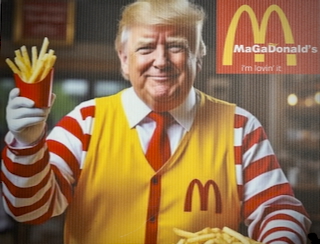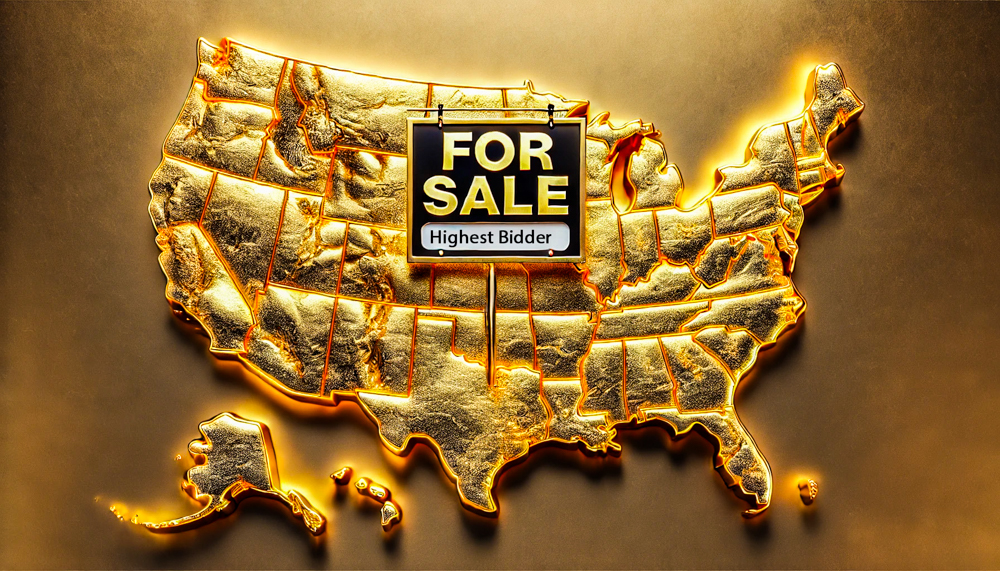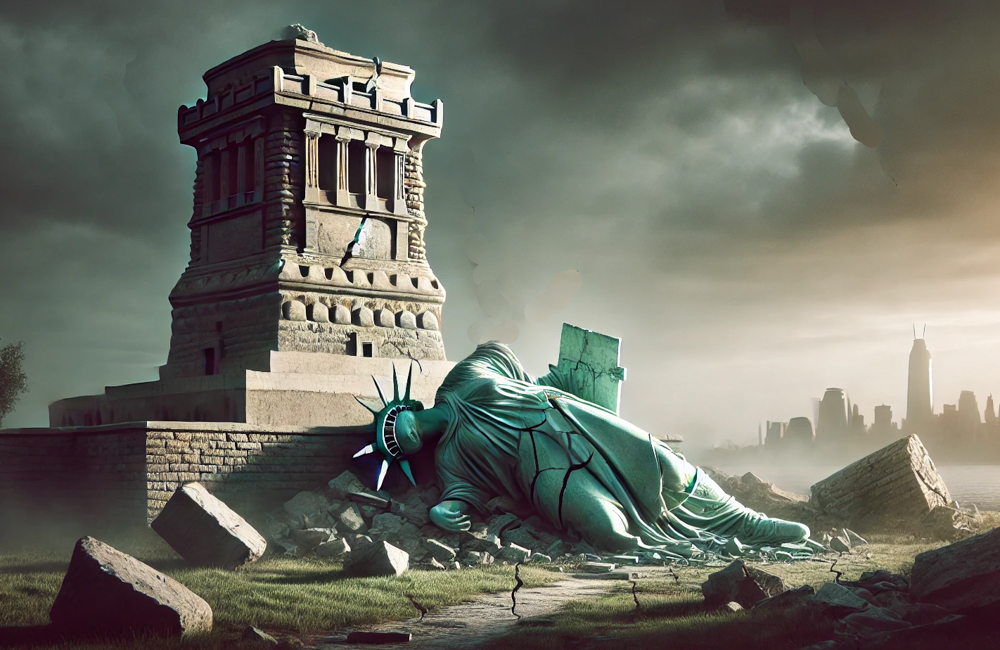AUTOCRACY IN AMERICA
Donald Trump’s Business Practices: Construction or Demolition?
Trump is domolishing all liberal values. Learn about how his businesses failed. Can we live in an America built on his distorted self-image?
Will Trump’s past business record predict future presidential success?

Donald J. Trump, in his second administration as the 47th president of the United States (Trump 2.0), has stirred a hornet’s nest of controversies in his quest to undermine liberal values and establish an autocratic government where criticism of his judgment is not tolerated. Like all good authoritarians, Trump is demanding zero accountability for his policies and priorities. And yet, Trump has had numerous business failures. Can we live with a Trump Americana?
Trump’s frequent campaign pronouncements mirrored this grandiosity: “I alone can fix it.” With his Trump 2.0 team of sycophants, he has upgraded his proclamation to: “…I run the country and the world.”
Many people worldwide are fearful of Trump’s consequential presidency. This fear is present in many domains of daily life. Still, one in particular is his use of punitive tariffs, through which he intends to redesign both the American and global economies. Despite substantially negative assessments of Trump’s tariff policies by notable economists and conservative newspapers, including the Wall Street Journal, Barron’s, and the Economist, Trump has imposed tariffs without heeding expert advice.
In the opaque wisdom of The Donald and his staff, the tariffs have been extended to remote corners of the earth, including Heard Island and McDonald Islands, uninhabited Australian territories home to penguins and seals with no permanent human population.
Ignoring recognized experts, Trump relies on extremists who lean more toward authoritarianism than conservatism. Take, for example, Paul Dans, one of the authors of the Heritage Foundation’s Project 2025, which has become Trump’s playbook for autocracy. Writing for the Economist, Dans fully endorses Trump’s wisdom in single-handedly re-engineering the world’s economies. In an effort to calm fears of economic collapse, Dans implores Americans and the world’s leaders to remain calm:
…there is a method here. Mr Trump has embarked upon a great restoration of America. The nation needs first to get back on its feet in order to remain the world’s beacon of freedom and democracy. The system is broken. A builder, Mr Trump knows that the initial phase of any renovation is demolition.
The reassuring message from Paul Dans is clear:
Donald Trump is a builder.
Trump’s renovations begin with demolition.
Are you calmed when Paul Dans that Donald Trump can move beyond the demolition phase to renovate America and the world, as we might expect from a “stable genius” where “he alone can fix it”?
Be the judge of Dans’ reassurance for yourself. I invite you to evaluate this extremely consequential claim of Donald Trump’s infallibility by reviewing his historical record as an entrepreneur that pre-dates his first presidency in 2016.
Trump’s Business Bankruptcies
Trump Taj Mahal Casino (1990): Promoted by Trump as the “Eighth Wonder of the World,” this casino cost nearly $1 billion to complete, financed largely through high-interest junk bonds. Despite its grand opening and initial fanfare, the casino quickly ran into financial trouble, filing for bankruptcy just over a year later. While the Taj Mahal itself had about $820 million in debt at the time of bankruptcy, Trump’s overall casino debts were significantly higher. Analysts widely attribute the casino’s failure to poor financial planning and excessive leveraging through risky use of junk bonds.
Trump Castle and Trump Plaza (1992): While struggling to make the Taj Mahal financially viable, Trump opened two other Atlantic City casinos, both of which filed for bankruptcy the following year, prompted by heavy debt loads and declining revenues, which made the casinos unsustainable. Faced with a multi-million dollar debt payment he couldn’t afford, Trump’s father, Fred Trump, purchased $3.5 million in chips that he never used for gambling. This transaction was illegal and resulted in a $30,000 fine. Trump made the casino pay this fine, even though the fraud was his, not the casino’s.
Plaza Hotel, NYC (1992): Purchased by Trump in 1988 for $390 million, this landmark New York City hotel accumulated $550 million in debt and filed for bankruptcy. Trump ceded 49% ownership to creditors to avoid personal liability.
Trump Hotels and Casino Resorts (2004): To restructuring his debts, Trump created this umbrella entity, which included multiple Atlantic City casinos and a riverboat in Indiana. This company filed for Chapter 11 after years of mounting losses ( $1.8 billion in debt). Trump reduced his stake but remained involved.
Trump Entertainment Resorts (2009): In another attempt to restructure debt, Trump rebranded his company that failed in 2004. This rebranded company soon filed for bankruptcy following the 2008 financial crisis and missed bond payments. Trump resigned as chairman and lowered his ownership to 10% per the bankruptcy agreement.
Financial Mismanagement Leading to Bankruptcies
During his tenure as chairman, Donald Trump’s casino and hotel businesses collectively lost about $1.1 billion, with the financial burden falling primarily on investors and bondholders rather than Trump himself.
Despite these massive losses and repeated bankruptcies, Trump personally received as much as $82 million in salary, bonuses, and perks, continuing to profit even as shareholders and employees lost significant sums. Trump routinely restructured his companies’ public debt to cover obligations he had personally guaranteed, shifting financial risk from himself onto corporate entities and outside investors. This strategy allowed him to benefit while others absorbed the losses.
In one notable legal dispute, Trump personally guaranteed a $640 million loan from Deutsche Bank to finance the Trump International Hotel and Tower in Chicago. After defaulting on the loan, he sued the bank for $3 billion, alleging reputational harm. The case was ultimately settled with an extension of the loan’s term by five years.
Taken together, these actions reveal a consistent pattern:
- Trump heavily leveraged his businesses with debt,
- made optimistic projections about profitability,
- repeatedly defaulted or declared bankruptcy, and
- ensured his own financial gain while investors, employees, and lenders bore the consequences.
In May 2016, when Trump was running for his first term as president, he summed his views of his “successes” in Atlatnic City:
“Atlantic City fueled a lot of growth for me,” Mr. Trump said in an interview in May, summing up his 25-year history here. “The money I took out of there was incredible.”
Trump’s Failed Businesses
The Collapse of Trump University
Launched in 2005, Trump University was marketed as a premier institution offering insights into Donald Trump’s real estate strategies. Despite its name as a “university,” it lacked accreditation and the authority to confer degrees. The institution charged students between $1,500 and $35,000 for seminars and mentorship programs, promising access to Trump’s “hand-picked” instructors and insider knowledge.
However, the “university” didn’t offer what was promised. Students from as many as 22 states reported that the courses provided little value and that instructors were neither selected by Trump nor possessed the promised expertise. The aggressive sales tactics and misleading claims led to widespread dissatisfaction. By 2010, Trump University ceased operations amid mounting complaints and legal scrutiny.
The fallout culminated in three major lawsuits: two class-action suits in California and a civil suit by the New York Attorney General. Plaintiffs accused Trump University of fraud, false advertising, and operating without a proper license. In November 2016, Donald Trump agreed to a $25 million settlement, which provided restitution to over 6,000 former students. Trump did not admit to any wrongdoing related to this settlement.
In an interesting footnote, Florida’s Attorney General Pam Bondi announced she was considering joining a New York lawsuit against Trump University. Just four days after Bondi’s announcement, the Donald J. Trump Foundation donated $25,000 to “And Justice for All,” a political committee supporting Bondi’s re-election campaign. Subsequently, Bondi’s office declined to pursue legal action against Trump University. Bondi’s decision to rescind action against Trump University raised conflict of interest charges. An investigation revealed that the Donald J. Trump Foundation donation was illegal. Trump reimbursed the foundation and paid a $2,500 penalty to the IRS.
In this 2013 transaction between Pam Bondi and Donald Trump, could there be any coincidence that, 12 years later, Pam Bondi heads the U.S. Department of Justice as Attorney General?
The Collapse of the Donald J. Trump Foundation
You might think that a charitable foundation might be easier to operate than a business. But think again about the management of the Trump Foundation. The ethical conflict between the Trump Foundation and Pam Boni’s reelection committee was the tip of the spear.
Presented as a philanthropic extension of Donald Trump’s brand, the Trump Foundation was ultimately exposed as a vehicle for personal gain. An investigation by the New York Attorney General revealed that the foundation repeatedly violated charity laws by using donated funds for Trump’s private benefit. These abuses included paying legal settlements for Trump’s businesses, purchasing personal items like a portrait of Trump himself, and making political donations—clear breaches of nonprofit regulations.
In 2018, following the Attorney General’s findings, the foundation agreed to dissolve under judicial supervision. A year later, a judge ordered Donald Trump to pay $2 million in damages for misusing the foundation’s funds. While Trump did not admit wrongdoing in the settlement, the case is an example of Trump transforming a public good into his personal slush fund.
The Collapse of Trump Mortgage
Trump Mortgage was launched in 2006 with much fanfare, as Donald Trump and his son Donald Jr. predicted it would quickly become a leading home-loan lender. However, launched during a real estate bubble, the timing proved disastrous – just as the U.S. housing market began to collapse. Within 18 months, Trump Mortgage had shut down, a casualty of the subprime mortgage crisis and poor management decisions.
Notably, the executive Trump appointed to run the business, E.J. Ridings, had exaggerated his credentials, having only briefly worked as a registered broker rather than as a top investment banker as claimed. Trump later distanced himself from the company’s failure, blaming its executives and denying significant involvement. The rapid collapse of Trump Mortgage is widely cited as an example of poor judgment, bad timing, and inadequate oversight in Trump’s business ventures.
By one analysis, Trump Mortgage failed for these reasons:
- Trump did not listen to experts advising him against launching the business during a housing bubble.
- Bad timing: once Trump Mortgage launched, Trump proclaimed to CNBC, “I think it’s a great time to start a mortgage company. … [And] who knows about financing better than I do?” – his statement made while the market was beginning to tank.
- Trump selected incompetent managers, specifically E.J. Riddings, whose highest role on Wall Street was as a registered broker, a position he held for a mere six days.
- Not building strong relationships: Trump Mortgage expanded too quickly instead of taking the time to building relationships with real estate brokers and lenders.
Donald Trump’s other failed businesses include Trump Airlines (which bled money and was taken over by creditors), Trump Steaks (gastronomes had no taste for Trump’s cut of ground round bottom roast), Trump Vodka (one of too many unremarkable spirits), Trump Ice (the market never got hot), and Trump: The Game (a lame game).
Trump’s Refusal to Pay Contractors
A recurring issue in Donald Trump’s business history is his companies’ refusal to pay contractors and workers in full or on time, often forcing them into costly litigation or settlements for a fraction of what they were owed.
Trump Taj Mahal Casino (1990): During the construction of the Trump Taj Mahal, at least 253 subcontractors-including small businesses responsible for plumbing, lighting, and wall installations-were not paid in full or on time. These contractors were collectively owed $69.5 million, but many were forced to accept settlements worth only a fraction of the original amounts, with some receiving as little as 30 cents on the dollar.
Piano Supplier for Trump Taj Mahal (1989): Michael Diehl, a piano dealer, supplied $100,000 worth of grand pianos to the Trump Taj Mahal but was paid only 70% of the agreed amount due to the casino’s financial difficulties. Diehl lost $30,000, a significant portion of his annual income, and had little recourse but to accept the reduced payment.
Cabinet Maker for Trump Plaza (1990s): A cabinet maker who completed a $400,000 contract at Trump Plaza was denied payment of $83,000 for the final bill. Despite withholding payment and claiming the work was unsatisfactory, Trump reportedly expressed willingness to hire the contractor again. The loss of this payment contributed to the demise of the contractor’s family business.
Trump National Doral Miami (2014): A painter who worked on renovations at Trump National Doral Miami was owed over $30,000. Trump’s company refused to pay, arguing they had “already paid enough.” A Florida judge ordered foreclosure on the property unless payment was made, and Trump’s company ultimately paid after lengthy legal proceedings.
Violations of Fair Labor Standards Act (2005–2007): Trump’s businesses were cited 24 times for failing to pay minimum wage or overtime, including violations by Trump Plaza in Atlantic City and Trump Mortgage LLC. These cases were resolved with back wage payments after intervention by the U.S. Department of Labor.
In a general pattern of non-payment since the 1980s, more than 200 mechanics’ liens have been filed against Trump or his businesses by contractors and employees claiming unpaid bills. These claims have come from a wide range of businesses, including air conditioning companies, chandelier shops, and even law firms that represented Trump in other cases.
Racial Discrimination in Trump’s Business Practices
Donald Trump and his companies have a long record of racial discrimination in business practices, beginning with a landmark 1973 lawsuit filed by the U.S. Department of Justice. The suit accused Trump Management, led by Donald and his father Fred Trump, of systematically violating the Fair Housing Act by refusing to rent apartments to Black tenants across 39 buildings in New York City. Without Trump admitting wrongdoing, the consent decree required his company to implement anti-discrimination measures and regular reporting to federal authorities.
In the 1990s, Trump’s casino in Indiana promised to hire a workforce that was at least 70% minority and to steer contracts to minority-owned businesses. However, a lawsuit brought by local leaders alleged that Trump’s company reneged on these promises, hiring far fewer minorities than pledged and relegating most Black workers to low-wage jobs. The case was dismissed on procedural grounds, but community leaders and former officials have said Trump’s commitments were never fulfilled.
In 1991, Trump Plaza in Atlantic City was fined $200,000 by New Jersey regulators for moving Black and female employees away from the gambling tables to accommodate a high-rolling mob figure known for racist outbursts. While he was not personally penalized, Trump’s willingness to comply with a racist customer’s demands was documented and punished by state authorities.
Perhaps the most infamous example of Trump’s role in racial injustice was his involvement in the Central Park Five case. In 1989, after five Black and Latino teenagers were wrongfully accused of assaulting a white jogger, Trump took out full-page newspaper ads calling for the reinstatement of the death penalty in New York. Even after the five men were exonerated by DNA evidence and another man confessed to the crime, Trump continued to insist on their guilt, refusing to apologize and repeating false claims about the case as recently as 2024. The men, now known as the Exonerated Five, have cited Trump’s actions as fueling public hysteria and contributing to their wrongful convictions.
What’s Your Bet: Trump the Builder or Trump the Demolisher?
Recall the observation by Paul Dans, Trump cheerleader and contributor to Project 2025, that the first task of renovation is demolition. Based on this partial review of Trump’s business failings, which didn’t include his character faults that contributed to dozens of allegations of, and a civil conviction, for sexual assault, what wager would you put on Donald Trump:
- as a builder,
- or as a guy with a knack for demolition without the skill to build?
Paul Dans’ wager is clear: “My bet’s on Trump the builder.”
Personally, I’ll hedge my bet.



